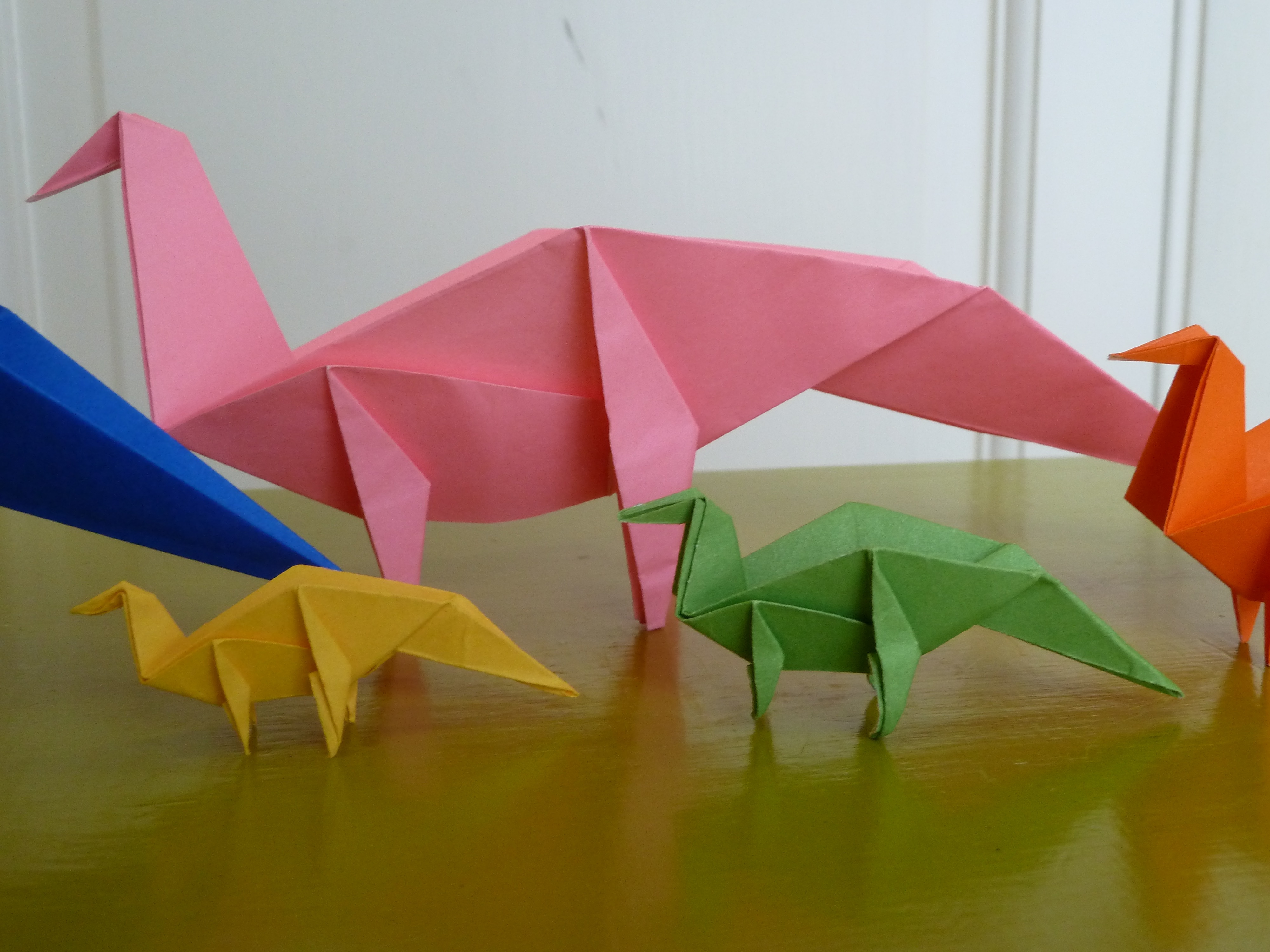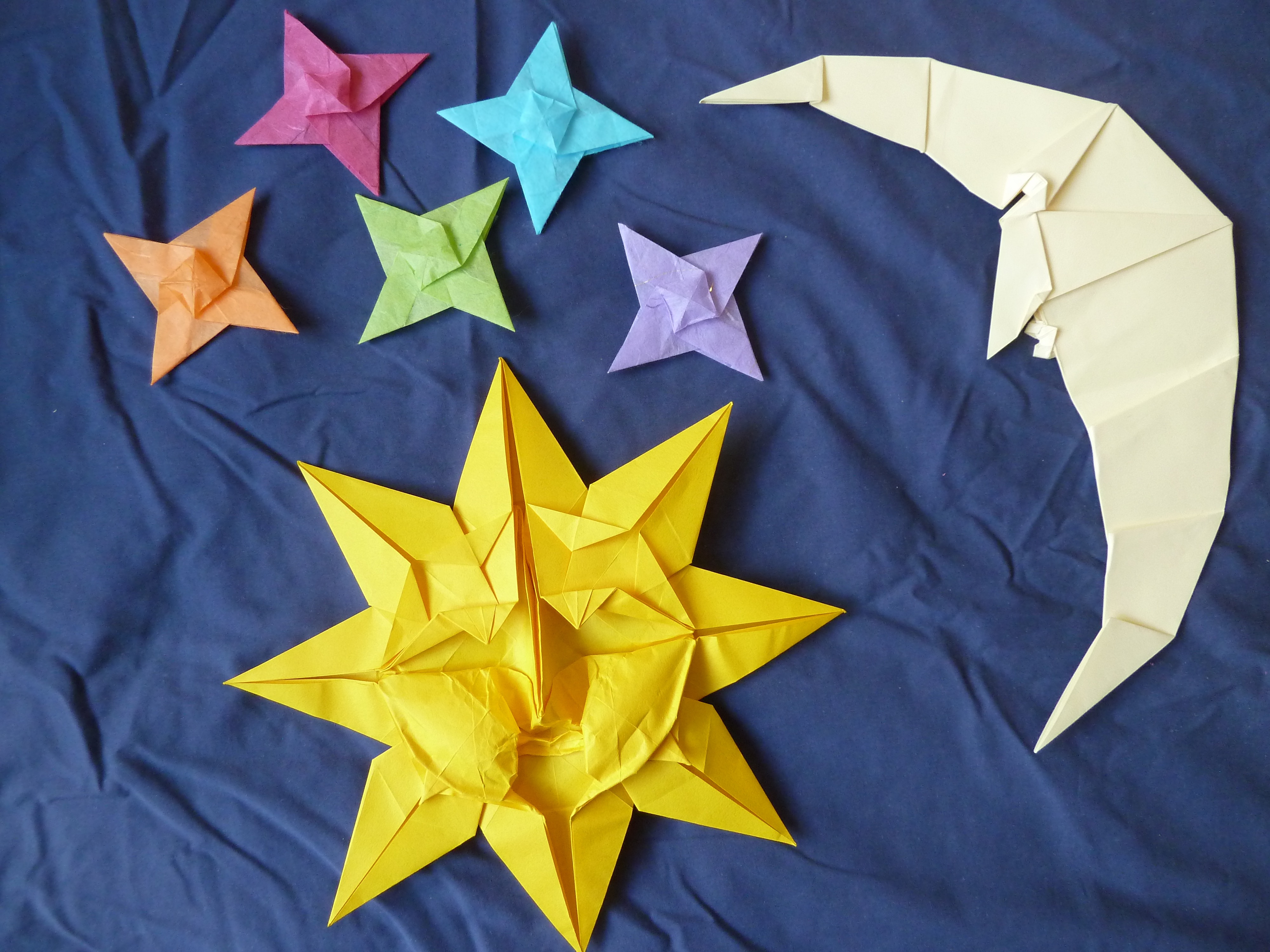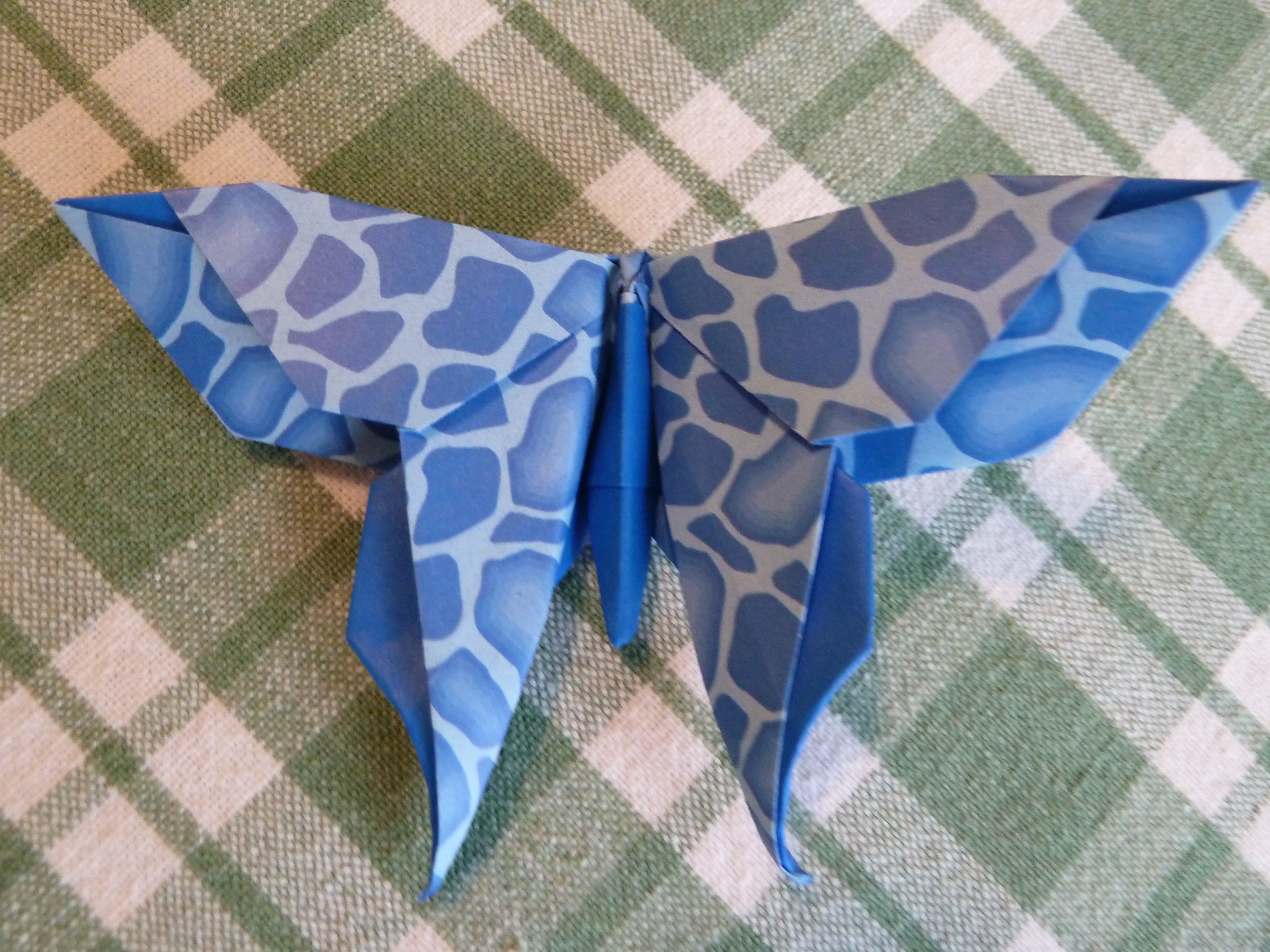

12 sided spring

14 sided spring

8 sided spring

10 sided spring

6 sided spring
Here are five origami springs, each folded from one piece of paper. I folded three of them, the purple one, the red one, and the darker blue one (someone I know folded the other two). They use Jeff Beynon’s design of an origami spring, but I adapted them to have a different number of sides. I was fortunate enough to be given to opportunity to work on a research paper about the geometrical properties of this spring structure, so I was able to examine the mathematical properties of these springs.
Here’s the basics of what I learned; the “standard” origami spring tutorial on youtube (the link is pasted here for anyone who wants to try folding it) is 12 sided, but you can change the number of sides (the value “n”) by changing the angle formed by the diagonal creases and the horizontal edge of the paper (the crease pattern demonstrating this is below). The angle theta is determined by pi/n (in radians), and if the angle is incorrect, then the edges won’t line up after you collapse the paper into the spring’s final shape.
Using trigonometry, I calculated the paper size to have four layers in each spring, and to have the desired number of sides (if you hover the mouse over the pictures I written how many sides there are). Because there is no tutorial of how to fold spring with different numbers of sides, I relied on my mathematical knowledge alone when I was folding the springs. I first folded the paper so it had all the perpendicular creases and all the diagonals, using what I had calculated, and then I collapsed the model by twisting each layer. This was quite difficult at times if the diagonals weren’t accurate, because in order to twist and collapse the model, every single crease has to be facing the correct direction (and paper can bend in different directions). It was very gratifying to see the final result after collapsing them! You can flatten them so they are two dimensional, or you can also pull the ends (deploy them) and stretch them out, as shown in the pictures above.
Folded by Sophie Usherwood
Designed by Jeff Beynon








































